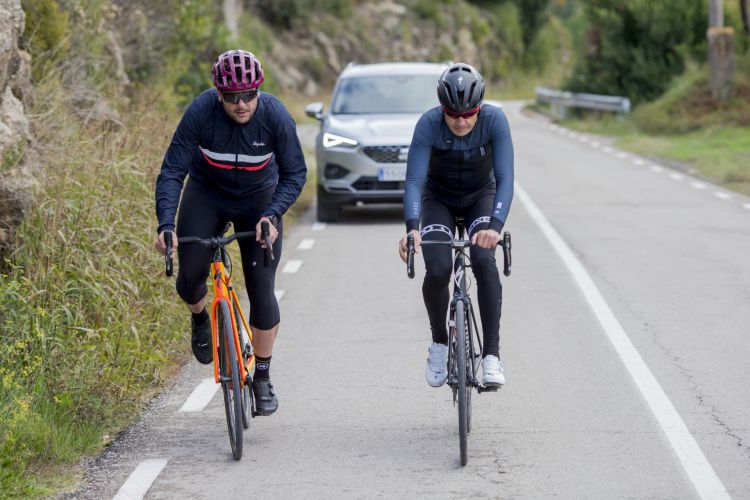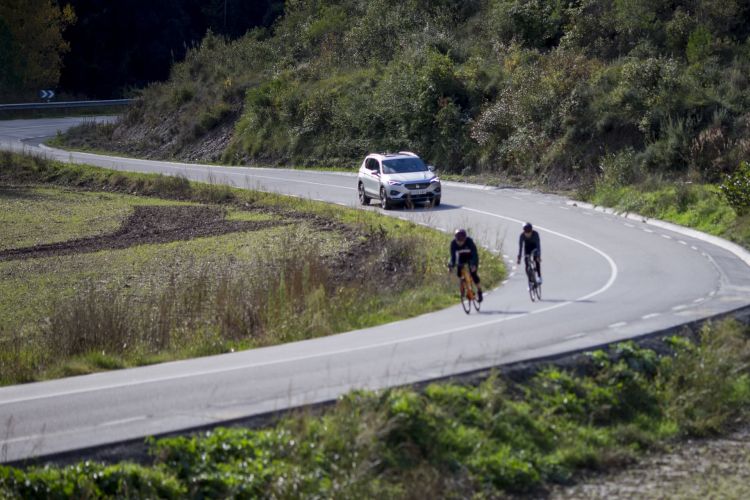That was the forceful response given by the Local Police of Granada in September, and that motivates this article that we recovered to close the year and having been one of the ones that has generated the most repercussions on the networks in recent months. An answer to a question that many drivers and cyclists continue to ask today. Why are cyclists on the road when there is an adjacent lane? The Local Police of Granada pointed out that “because they want to and because they can” referring to the local ordinance.
But, as we will see below, the regulations, and the General Directorate of Traffic itself, allow cyclists to use the road, even though there is a bike lane completely separated from the road.
Now, what exactly does the regulation say, the Granada Local Police and the DGT itself?
Why is this cyclist on the road, when there is a bike lane? Well, because he wants to and because he can. On urban roads in our city, the ordinance allows cyclists to ride on one or the other without distinction. pic.twitter.com/ErEOHAhglW
— GRANADA LOCAL POLICE (@PoliciaGr) August 30, 2022
Cyclists go on the road “because they want to and because they can”
The Local Police of Granada published in September a photo on Twitter, in which it was appreciated how a cyclist circulates on the road, with an adjacent bike lane. Social networks have increasingly become an instrument of the Security Forces and Corps (FSCE), to publish official statements, remember the regulations, resolve doubts and launch their road safety campaigns – on some occasions with more success what others.
In this case, and despite the forcefulness of the message, and the commotion generated, The statement of the Granada Police is correct, if we abide by the regulations, and in general it is applicable to the entire national territory.
In it General Traffic Regulations There is, in no case, any rule that obliges the cyclist to use the bike lane, when it exists, and prevents them from riding on the road. The General Traffic Regulations, in its article 64, establish that cyclists can circulate on bike lanes, which have priority of passage in them. But it does not establish that it is mandatory to use them and They will be able to ride on the road unless there is a general or specific prohibition or obligation that prohibits cyclists from riding on it..
The R-407 signal obliges the cyclist to ride on the road along the bike lane, both on urban and interurban roads. pic.twitter.com/BcvGJEkzPC
— Dir. Gral. Tráfico (@DGTes) November 12, 2015
The exception that confirms the rule, the signal R-407 to
The exception, not without controversy, comes with the R-407 a sign, which is located at the accesses to the lanes reserved for cyclesand that according to article 155 of the General Traffic Regulations establishes:
R-407 a. Pathway reserved for cycles or cycling path. Obligation for cycle drivers to circulate on the road at whose entrance it is located and prohibition of other road users from using it
The signal R-407 a, as we told you, It is located at the accesses to the lanes reserved for cyclists and it is a circular sign with a blue background and the pictogram of a bicycle.. From the Provincial Council of Bizkaia an attempt was made to resolve this doubt, with some consultations with the DGT, and in Lawyers Cycle They also investigated and consulted in this regard, proposing, among other things, the elimination of this signal to replace it with an indicative one that would eliminate its obligatory meaning.
In any case, given the existence of signal R-407 a, and in the absence of new reforms, the cyclist should use the bike lane compulsorily and we know that traffic agents are denouncing the breach of this obligation.
The DGT recommends, but does not require, using the bike lane
As we said, the regulations regarding the use of the road, when there is an adjacent bike lane, allows the cyclist to choose whether to use the road or the bike lane. In any case, the DGT has pointed out in some of its recommendations for cyclists that, “for safety, in the city and on the highway, it is always recommended – not mandatory – to use bike lanes whenever they are available”.
In some cities, there are also road markings that designate shared lanes, which are not only recommended for cyclists but also imply restrictions – for example speed – for greater protection of the cyclist. Even in this case, if we refer for example to the Sustainable Mobility Ordinance of Madrid, establishes that “bicycles may choose to ride on the road, through specific lanes or areas set aside for this purpose”.
And what do cyclists defend?
If we echo the reaction of some professional media and bicycle enthusiasts, such as IberoBikethe clarification of the Local Police of Granada was well received.
From these means It also points to a fact that anyone who has ridden a bike on a bike lane knows, which is none other than the number of design problems that many bike lanes have.especially urban ones, and that are frequented by families who move very slowly, or even by pedestrians, which prevents the safe movement of cyclists.
The very example of the photo used by the Local Police of Granada on Twitter shows us a more than obvious case of a bike lane with conditions that are not easy for cycling at a certain pace and even less for practicing sporty cycling, with potholes, two-way traffic, a very narrow space, and even bollards.
Beyond what has been said in this article, in which we have tried to analyze what the regulations establish, we will not tire of advocating for being more empathetic, whether we drive a car or ride a bicycle, and hope that this empathy and the utmost caution is what prevails on the roads that we have to share among all in this coming year 2023.
Without further ado, I just want to thank you for reading this article, that you have been with us throughout this year, and wish you a Happy New Year 2023.


